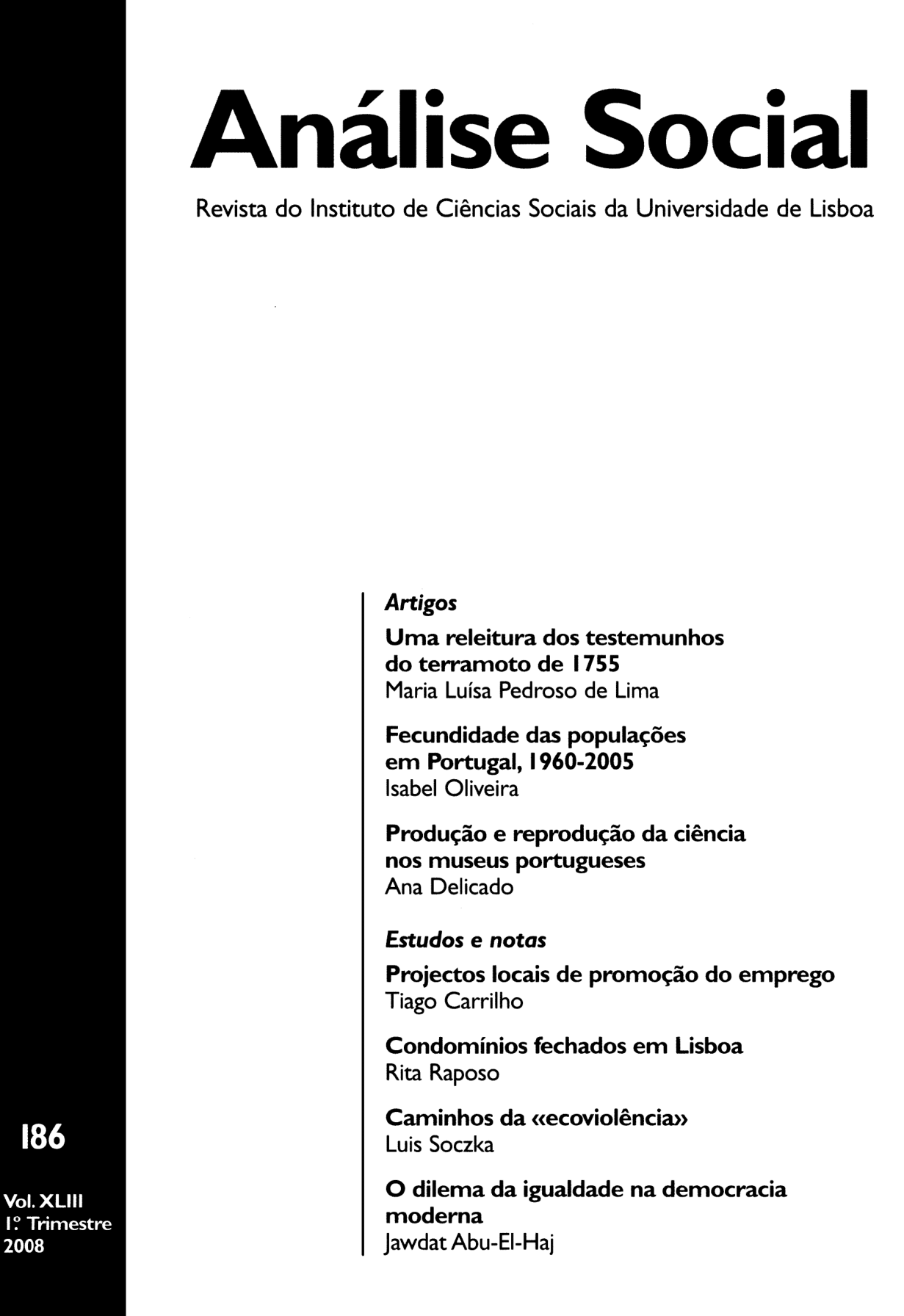Fecundidade das populações e das gerações em Portugal, 1960-2005
DOI:
https://doi.org/10.31447/AS00032573.2008186.03Keywords:
decline in fertility, fertility postponement, adjusted total fertility rate, cohort fertilityAbstract
This article discusses the effect of birth postponement on usual fertility indicators. A preliminary analysis compares the development of fertility as shown by population indicators with that revealed by indicators derived from observing the generations throughout the life cycle. The comparison of these two approaches shows a much stronger decline in the period fertility indicators than that which occurs in the cohort completed fertility of the corresponding generations. In the second stage of analysis we calculate the adjusted total fertility rate, based on the changes in the timing of childbearing, in line with Bongaarts and Feeney. These estimates point to the possibility of the effects of a recovery in the fertility rate from 1,4 to 1,6 children per woman.



